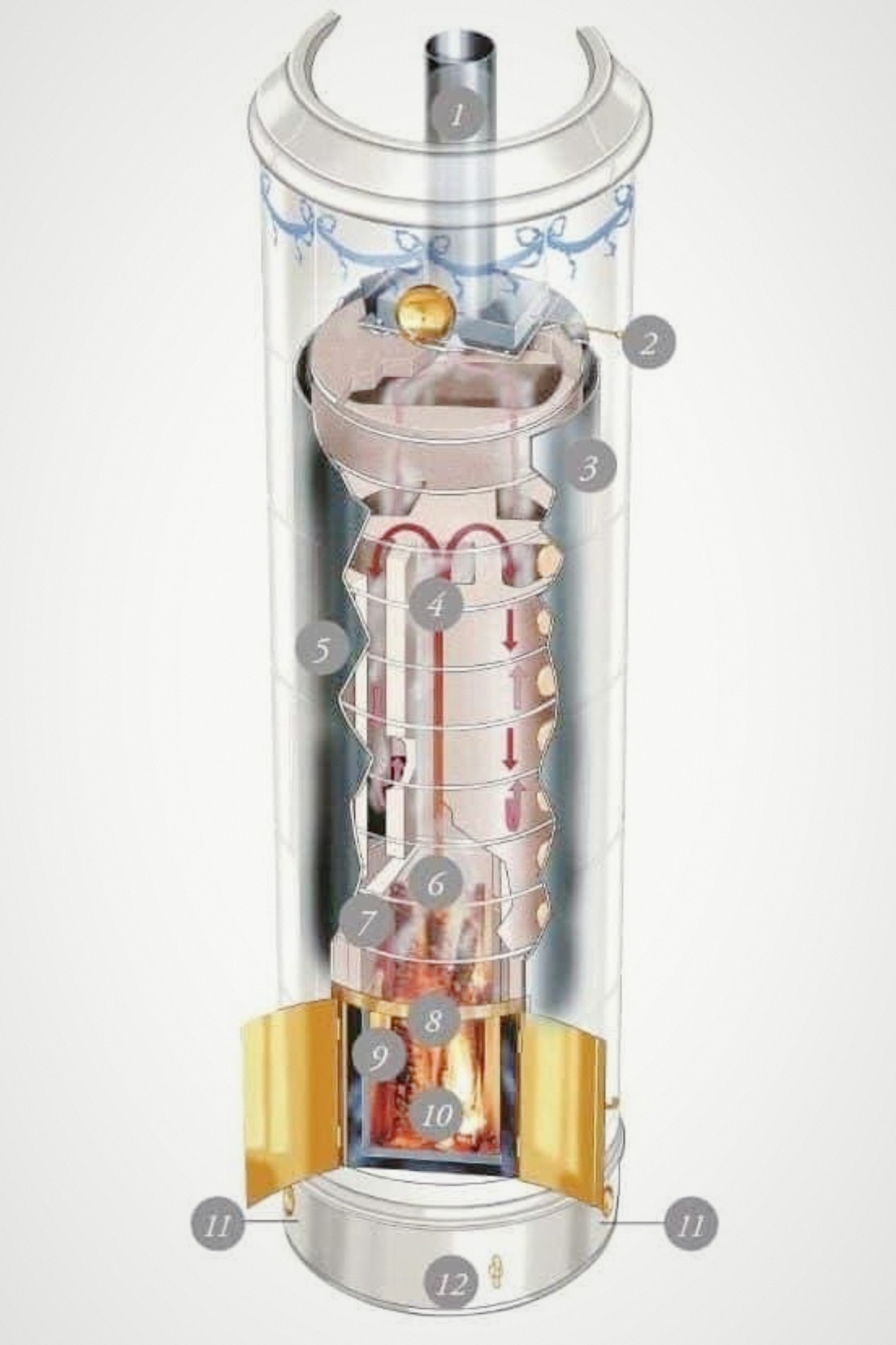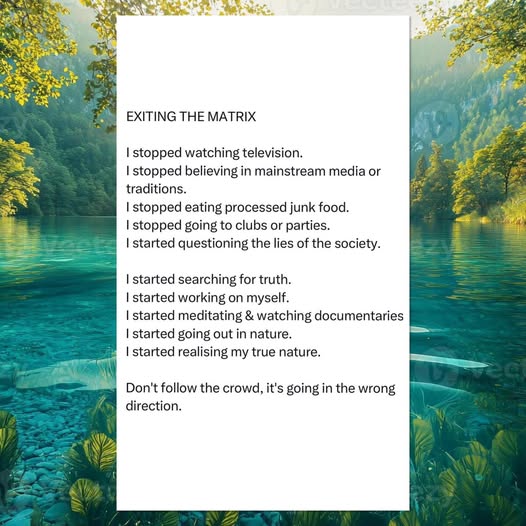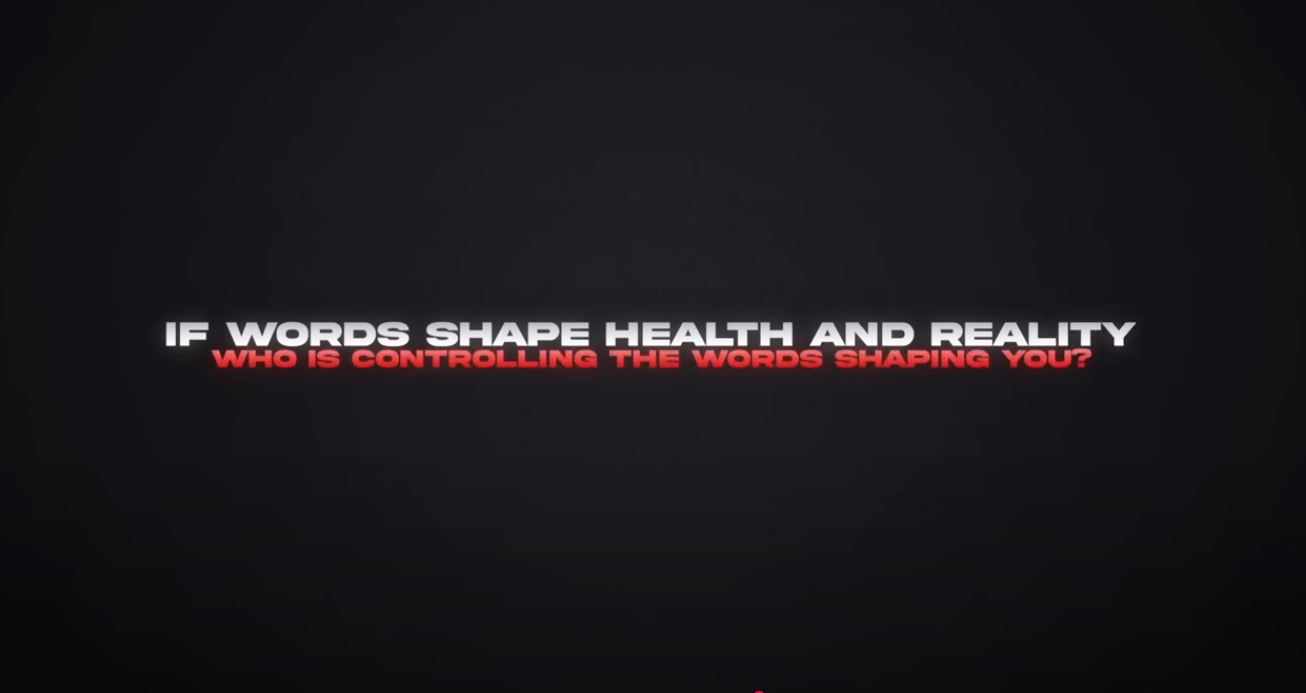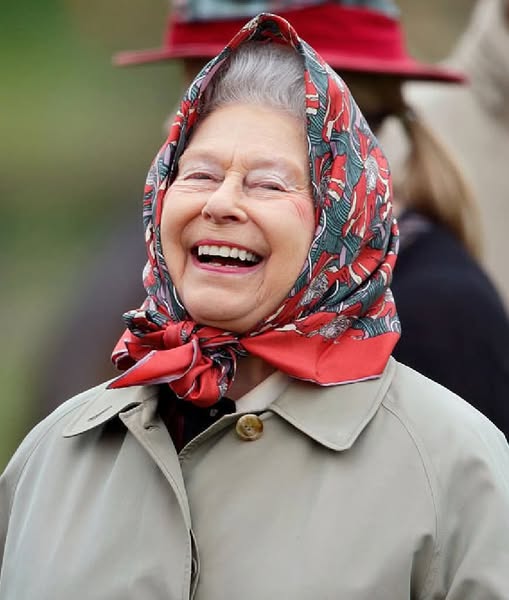

Historic masonry heater in Stockholm, Sweden.
The main thing that distinguishes a masonry heater from other wood-fired heating appliances is the ability to store a large amount of heat. This means that you can rapidly and cleanly burn a large charge of wood without overheating your house. This type of oven uses the wood in a very efficient way because the smoke circulates in a built-in duct system, which slowly releases the heat from the oven out to the coated tiles. The tiles then have the function of storing heat. Christineberg type tiled stoves keeps the heat for up to 24 hours after firing.
From Wikipedia:
A masonry heater (also called a masonry stove or cocklestove) is a device for warming an interior space through radiant heating, by capturing the heat from periodic burning of fuel (usually wood), and then radiating the heat at a fairly constant temperature for a long period. Masonry heaters covered in tile are called Kachelofen (also tile stoves or ceramic stoves). The technology has existed in different forms, from back into the Neoglacial and Neolithic periods. Archaeological digs have revealed excavations of ancient inhabitants utilizing hot smoke from fires in their subterranean dwellings, to radiate into the living spaces. These early forms eventually evolved into modern systems.
Finish reading: https://en.wikipedia.org/wiki/Masonry_heater
I asked Grok.com:
Saw an image of a masonry heater (also called a masonry stove or cocklestove) is a device for warming an interior space through radiant heating, by capturing the heat from periodic burning of fuel (usually wood), and then radiating the heat at a fairly constant temperature for a long period. Masonry heaters covered in tile are called Kachelofen (also tile stoves or ceramic stoves).
Do you have access to an engineering schematic for a masonry heater?
One comprehensive example comes from the Masonry Heater Association of North America’s reference manual, which includes detailed cross-sectional diagrams and plans for various designs (like the Kachelofen, Russian, and contraflow styles). These aren’t simple sketches—they’re technical illustrations with labeled components, gas flow paths, dimensions, and construction notes, all geared toward safe, efficient builds compliant with standards like ASTM E1602.
G’day! Yeah, I can access engineering schematics for masonry heaters through reliable technical resources. One comprehensive example comes from the Masonry Heater Association of North America’s reference manual, which includes detailed cross-sectional diagrams and plans for various designs (like the Kachelofen, Russian, and contraflow styles). These aren’t simple sketches—they’re technical illustrations with labeled components, gas flow paths, dimensions, and construction notes, all geared toward safe, efficient builds compliant with standards like ASTM E1602.
I’ll describe a representative schematic here: the vertical cross-section of a basic Kachelofen (German-style) masonry heater (Figure 1 in the manual). This is a compact, top-venting design ideal for radiant heating, with a short but efficient gas path for high-temperature burns. It’s built around a refractory core surrounded by a tiled or bricked shell, storing and slowly releasing heat from wood fires. The overall heater might weigh 1,500–3,000 lbs., with a footprint around 4 ft. tall x 3 ft. wide x 2 ft. deep, depending on customizations.
Key Components and Layout (Vertical Cross-Section View)
The diagram shows a layered, symmetrical structure from base to top, with the firebox at the lower center, channels weaving around it, and exhaust rising centrally. Here’s a breakdown:
| Component | Description | Dimensions/Materials | Function |
|---|---|---|---|
| Base/Foundation | Insulated concrete pad or slab under the entire unit. | 6–12 in. thick; foam glass or vermiculite insulation; reinforced concrete. | Supports weight; prevents heat loss to the floor. Built first on a frost-line foundation. |
| Ash Box/Door | Removable pan below the firebox for cleanup. | Matches firebox width (e.g., 18–24 in. wide); steel or cast iron door. | Collects ash; accessed periodically after burns. |
| Firebox | Central combustion chamber with glass door for loading wood. | 18–24 in. wide x 18 in. deep x 20–30 in. tall; lined with 4.5 x 9 x 2.25 in. refractory firebricks. | Where fuel burns hot (1,200–1,800°C); holds 20–50 lbs. of wood per load. Door seals for controlled air. |
| Gas Slot | Narrow gap above firebox connecting to downdraft channel. | ≥1/30 of firebox area (e.g., 1.25 in. high x full width). | Allows hot gases to bypass and enter channels without pooling. |
| Downdraft/Updraft Channels | 3–4 horizontal passages (behind and above firebox) for gas flow. | 3–4 in. deep x 18–24 in. wide (108–144 sq. in. total area); refractory bricks or castable shapes. | Gases flow down, across, then up—absorbing heat into the masonry mass (path ~10–15 ft. long). |
| Heat Exchange Area | Surrounding masonry mass (core channels + shell). | Wall thickness ≤10 in. average; refractory core + standard brick/stone shell. | Stores heat for 8–24 hours of radiant output (100–200 Btu/hr/ft²). |
| Expansion Joint | Air gap or compressible layer between core and shell. | 1 in. thick mineral wool or ceramic blanket. | Allows thermal movement; prevents cracking. Installed during shell build. |
| Exterior Shell/Shroud | Outer facing (tiles, brick, or stone) with air space from core. | 4–8 in. thick; kachel tiles or natural stone. | Radiates even heat; aesthetic finish. Mortared with Type N cement-lime. |
| Hearth Extension | Non-combustible floor surround. | 20 in. front x 12 in. sides; brick pavers on concrete. | Safety buffer from embers. |
| Exhaust Outlet/Chimney | Central top vent to metal or masonry flue. | 8 x 12 in. liner; ≥15 ft. tall to roof. | Final gas exit after heat extraction; includes shut-off damper (5% open min.). |
| Clean-Out Ports | Small doors at channel bases. | 6–8 in. square; tight-sealing metal. | For soot/ash removal; 1–2 per design. |
Gas Flow Path and Operation
Arrows in the diagram trace the airflow:
- Combustion air enters via a sealed outdoor inlet (no indoor draw) into the firebox.
- Gases rise, hit the gas slot, drop into the downdraft channel behind the firebox.
- They weave horizontally (3–4 passes) through the channels, heating the refractory mass.
- Gases rise via updraft to the central chimney, exiting after ~90% efficiency. This indirect path ensures near-complete combustion, minimizing smoke and creosote.
Construction Notes
- Steps: Start with the insulated base, build the refractory core (firebox + channels) using dipped refractory mortar (1/16–1/8 in. joints), add expansion joints, then enclose in the shell. Cure with small test fires (5–10 lbs. wood, spaced 6+ hrs.).
- Safety: 4 in. clearance to framing, 48 in. from door to combustibles; no dampers in channels.
- Output: Heats 1,000–2,000 sq. ft. for 12+ hrs. per firing.
If you’d like me to dive into a different style (e.g., Russian baffled design with horizontal/vertical baffles for longer heat storage), pull details from another source, or even sketch a simple text-based diagram, just let me know!








